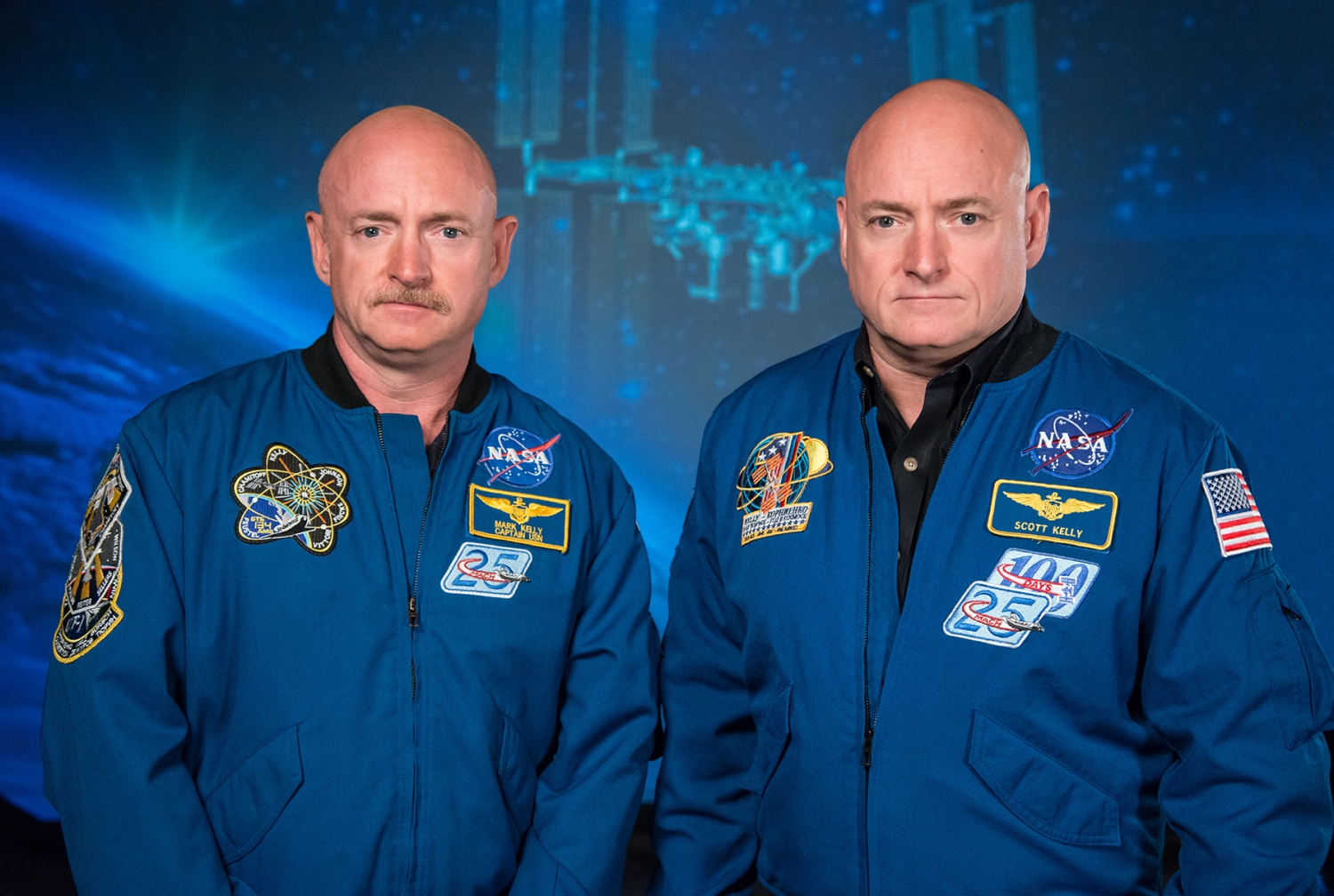Identical twin astronauts offer a rare chance to study how space affects the human genome
Some 220 miles above our collective heads, astronaut Scott Kelly is orbiting the planet on the International Space Station. Awaiting his return here on Earth is his twin brother, Mark — six minutes his elder, and himself a retired astronaut.
During the run-up to Scott Kelly's launch last March, NASA officials realized they had a potential scientific bonanza on their hands: a natural experiment involving two people with all-but-identical genes, one of whom would spend a full year in space. So they put out a call for proposals, offering a total of $1.5 million in grants to scientists eager to investigate the effects of long-term space travel on the human body. Among the 10 winners of the three-year awards: Dr. Christopher Mason, an associate professor of physiology and biophysics at the HRH Prince Alwaleed Bin Talal Bin Abdulaziz Al-Saud Institute for Computational Biomedicine and an assistant professor of neuroscience at the Feil Family Brain and Mind Research Institute.
Dr. Mason is principal investigator of a study entitled "The Landscape of DNA and RNA Methylation Before, During, and After Human Space Travel." Essentially, it's an exploration of how an astronaut's environment affects how his or her genes are expressed — an area known as epigenetics — and whether any such changes are temporary or permanent. The other nine funded projects address such wide-ranging topics as cognition, immune response, and the composition of gut, skin and oral bacteria. "This is probably the most integrated biological portrait of a human ever made — on Earth and then again in space," Dr. Mason says of the overall effort, known as the NASA Twins Study. At the same time, he acknowledges the project's inherent limitations: it does, after all, have only two research subjects. "Statistically, it's the lowest power you could ever have," he notes. "So no one in the study, myself included, believes it's the be-all and end-all. This is the first step on a long stairway toward understanding human physiology in space and helping NASA and humanity prepare for long-duration missions."
It's a step that Dr. Mason was thrilled to take; he's a lifelong astronaut fan who, as a kid, dreamed of applying to NASA and attended space camp twice. Similarly, colleague Dr. Francine Garrett-Bakelman, who'd once contemplated a career in aerospace medicine, leapt at the chance when Dr. Mason and his co-investigators — Dr. George Grills, assistant dean of research resources, and Dr. Ari Melnick, the Gebroe Professor of Hematology-Oncology and director of the Raymond and Beverly Sackler Center for Biomedical and Physical Sciences — asked her to take on the project's bench work. "This is a way to participate in space science that I never imagined I'd be able to do," says Dr. Garrett-Bakelman, an instructor in medicine and a mentee of both Drs. Mason and Melnick. "Very few people are astronauts; only 500-plus have actually been in space, but there are hundreds of thousands who support that work. And being part of that group is pretty special."

Dr. Christopher Mason
Ultimately, the team's investigations could have implications both on Earth and beyond. Studying how the epigenome responds to the stresses of space travel — with its microgravity, increased radiation exposure, and lack of conventional days and nights — could offer insights into such topics as aging, cancer and circadian rhythm function. On a logistical level, the Twin Study is spurring the creation of a computational infrastructure to integrate findings from all ten projects, which Dr. Mason says could serve as a model for researchers in other data-heavy fields. And as NASA contemplates long-range space travel, including a mission to Mars, the study could influence how future generations of astronauts live and work. "This could help us understand how to design a space station so it can be a healthy environment," Dr. Mason says. "As for the long-term goals, the sky's the limit. NASA is planning to send humans to Mars and beyond."
Before Scott Kelly launched, he and his twin underwent a battery of physical tests; some are ongoing during his stay, and both brothers will have follow-up exams after Scott returns. During the yearlong mission, the Kellys are giving regular blood samples for analysis — though, obviously, Scott's are harder to obtain. Some of his specimens are frozen for transport back to Earth during scheduled astronaut return trips, while others are delivered via space capsule: a fresh sample splashes down in the ocean, gets picked up by helicopter, and is transported to the Johnson Space Center in Houston. There, Drs. Mason, Melnick, Garrett-Bakelman and fellow Twins Study researchers collect and process it, and some of the samples are brought back to Weill Cornell Medicine. Dr. Garrett-Bakelman confesses that the first time she did so — handling blood that just a matter of hours earlier had flowed through the veins of an orbiting astronaut — was rather mind-blowing. "It was a very high-quality sample," she recalls. "It was as though the cells didn't even care that they'd traveled down from the International Space Station, landed in Kazakhstan, and flown through Ireland to Houston to the lab. It was a little surreal, to be honest. But it was really cool, because it was from space."
— Beth Saulnier
This story first appeared in Weill Cornell Medicine, Vol. 14, No.3.

